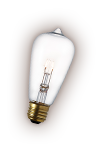Make Marketing Suck Less
12 Most Ridiculous Communication Myths to Stop Believing
By Michelle Mazur > January 30, 2013
Filed Under Communication
Bad communication and public speaking advice abounds on the Internet and even from communication professionals. At a networking event, I mentioned that I was a presentation coach. It was met with a reply “Oh, when I speak I always look right above my audience’s head so I don’t have to make eye contact. That’s what my high school public speaking teacher told me to do.”
I pondered whether I should correct her or just smile and move on. In order to become better communicators, the myths of communication must be debunked. Little did my networking friend know that she would be the inspiration for the 12 Most Ridiculous Communication Myths that Everyone Needs to Stop Believing.
Table of Contents
- 1 1. 93% of communication meaning is nonverbal
- 2 2. Public speaking is the #1 fear
- 3 3. Picturing an audience naked will totally help with your nerves
- 4 4. Introverts are shy
- 5 5. You can wing it
- 6 6. Don’t make eye contact – look at their forehead
- 7 7. Jargon makes me sound smarter
- 8 8. It’s ok if I go over time
- 9 9. The more information I can stuff in the more effective my communication
- 10 10. Start with a joke
- 11 11. You must be perfect
- 12 12. What you say is what is understood
1. 93% of communication meaning is nonverbal
Have you ever tried to watch a foreign film without subtitles? According to his “rule”, you should be able to follow 93% of the plot based on vocal intonation and nonverbal signals. Heck, I couldn’t even follow the plot of Trainspotting without subtitles and that movie was in English (kind of). The Mehrabian Myth has been perpetuated throughout the Internet as an undeniable rule of communication. Except that is not what Mehrabian found in his study of communication – he was actually researching emotionally congruent versus incongruent messages. Martin Shovel at Creativity Works does an excellent job debunking this myth in his short video – Watch it and learn.
[youtube_sc url=”http://youtu.be/7dboA8cag1M”]
2. Public speaking is the #1 fear
No one has ever died or been gravely injured while giving a speech. Ambulances are not on standby outside of Toastmasters meetings across the globe. Basically, this myth comes from a book called The Book of Lists by David Wallenchinsky among others. Public Speaking is #1, insects and bugs are at #3 and death ranks at #7. The problem is that people were given a list of fears to check and simply people checked fear of public speaking most often. Public speaking is not the #1 fear it is just the most commonly reported fear!
3. Picturing an audience naked will totally help with your nerves
The reasoning behind this myth is that it will make your audience appear as vulnerable as you feel. It never works and not only that can be rather distracting. Some people you just don’t want to imagine naked! Knowing the introduction to your presentation so well you could deliver it drunk is a far better and less disturbing way to cope with the jitters. By the way, I am not advocating drunken presenting!
4. Introverts are shy
Introverts might be shy but often time they are gregarious and outgoing. In fact, you might not even know someone is introverted. Being introverted means getting more energy from internal thoughts and feeling then the external world. You can be introverted and be outgoing.
5. You can wing it
No. You can’t. Practice your presentation, elevator pitch or even that tough conversation you need to have with your boss. If you know what you want to say beforehand, you’ll be more successful delivering a clear message.
6. Don’t make eye contact – look at their forehead
The problem with this piece of advice is the ENTIRE audience knows you are not looking at them! The better advice is to find several friendly faces in the audience to make eye contact. As your get more comfortable while speaking, make eye contact with several more.
7. Jargon makes me sound smarter
It actually just makes you sound incomprehensible. As a communicator you always have to speak the language of those you want to reach. Jargon, acronyms, and corporate speak don’t belong if you want people to get your message.
8. It’s ok if I go over time
NO! NO! NO! It is NOT ever ok to go over time in a presentation. You will lose your audience and tick people off. If anything end early!
9. The more information I can stuff in the more effective my communication
Simple messages that are easy for the audiences to comprehend are the best messages for presentations. However, it takes a lot more
work to distill a complex idea to its essence instead of just spewing information.
10. Start with a joke
Starting a presentation or conversation with joke puts a TREMENDOUS amount of pressure on you. If your joke flops, you face a room so silent you can hear the air conditioning whirring in the background or worse getting the pity laugh from the crowd. Unless you are Jon Stewart or Gilbert Gottfried, never add humor to a presentation instead let humor flow naturally.
11. You must be perfect
Your presentation will never be perfect. Speakers are human. We make mistakes. The good news is that audiences are very forgiving of
our mistakes. Your audience is on your side. They want you to succeed. Most of the time, the mistakes made in a presentation are bigger in your own mind then to your audience. Embrace imperfection!
12. What you say is what is understood
We would live in a perfect world if what we said was understood perfectly. Communication is filtered through a person’s perception. It’s entirely possible that no matter how clearly you deliver your message, the recipient might still miss the point. It’s always best to check if the other person got the message.
Becoming better communicators is paramount to be successful in business. Communication is key to grow your client base or get promoted at work. I hope that by debunking these communication myths that you are on your way to being all you can be as a communicator and presenter.
Did I miss any myths? Do you disagree with any of them? Please let me know in the comments below!
This article originally appeared here on 12Most.com. Reposted with permission and love.
Create Your One-of-a-Kind Message
Your 3 Word Rebellion is the Key to Growing Your Business & Impact








